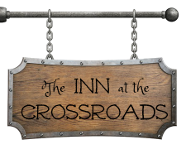“Beneath them, the plain stretched out immense and empty, a vast flat expanse that reached to the distant horizon and beyond. It was a sea, Dany thought. Past here, there were not hills, no mountains, no trees nor cities nor roads, only the endless grasses, the tall blades rippling like waves when the winds blew…” -A Game of Thrones

Teff Porridge with Dates
Thoughts:
This recipe comes courtesy of a suggestion by blog fan and reader Jessette. I’d seen teff for sale, but hadn’t the faintest idea what to do with it. Now, I’m eager to experiment. The seeds are tiny, even smaller than chia seeds, but they cook like millet or quinoa, but faster. It’s an ancient grain, dating back to at least 1,000 BCE, making it an ideal candidate for the continent of Essos.
Teff porridge is like a quirky, earthier version of breakfast oatmeal. The grains don’t break down completely, leaving tiny *pops* of texture. The dried dates match the darkness of the teff, and the honey-sweetness ties the whole thing together. I was instantly smitten by the tasty uniqueness of this morning breakfast alternative.
Proposed Location?
The Dothraki Plains, hands down. Teff comes from a type of African grass, which seems to particularly invoke images of the Dothraki Sea. One taster suggested that it would also make an excellent stuffing. I imagine the Dothraki women or slaves hunting rabbits and birds as they traveled, and using teff as a nutritious stuffing.
Recipe for Teff Porridge
Cook’s Notes: Teff porridge, as made by the Dothraki, could include any ingredients they had plundered from their enemies or gathered on the plains. Get creative!
Ingredients:
- 1 cup whole teff grain – not the flour
- 3 cups boiling water
- 1 tbsp butter
- ½ tsp ground cinnamon
- pinch of ground cloves
- 1/2 cup chopped dried fruit, such as dates or raisins
- ¼ tsp sea salt
- ¼ cup honey, plus extra for serving
Pour the teff into a medium saucepan over medium-low heat, and toast gently for 3-5 minutes until it gives off a nice, nutty smell.
Add the butter, boiling water, and spices. Increase heat to a simmer and stir occasionally to keep the porridge cooking evenly. After 10 minutes, add the chopped dates, salt, and honey. Continue to cook for an additional 5-10 minutes, adding extra water if needed, until the porridge is cooked through to your liking.
Scoop into serving bowls, and garnish with extra honey and dates. Enjoy!

Teff Grains









